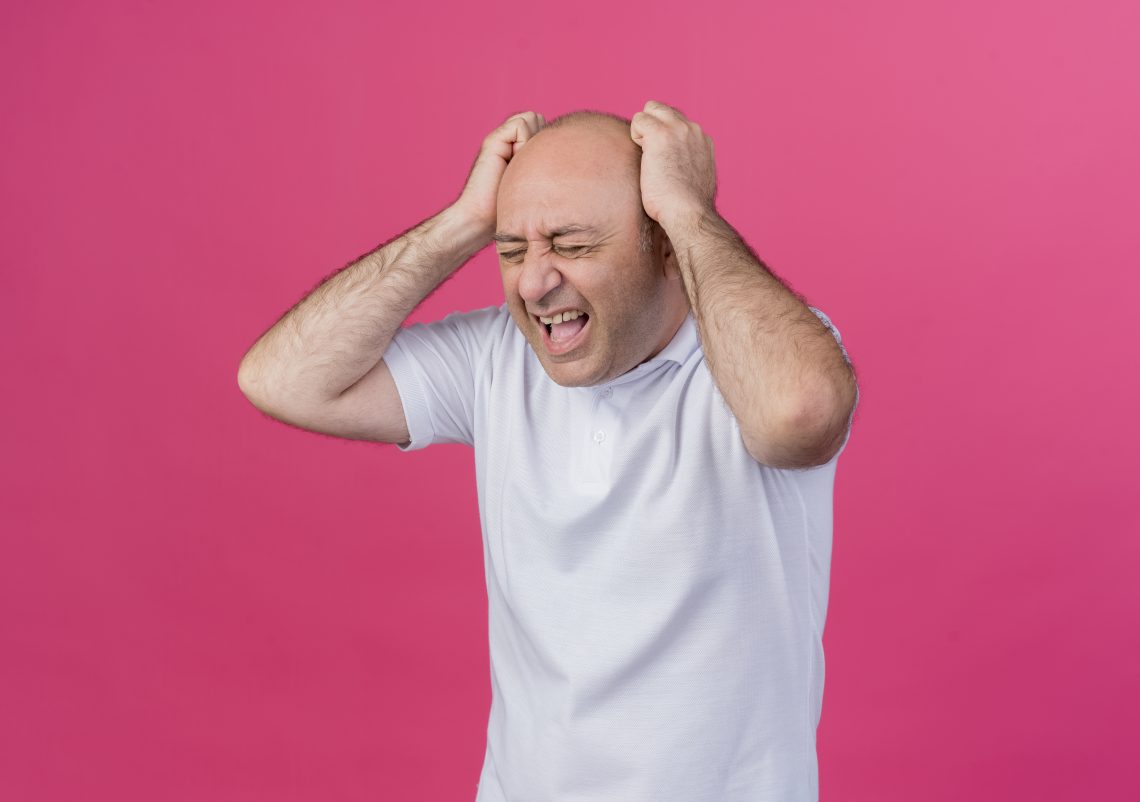Head injuries can lead to several complications, ranging from headaches and dizziness to neurological symptoms. But one concern many people don’t expect is hair loss. If you recently experienced a head injury and noticed thinning hair or patches of hair falling out, you may be wondering:
Can a head injury cause hair loss?
The short answer is yes in some cases, head injuries can directly or indirectly lead to hair loss.
This article explains how head injuries affect hair growth, the different types of hair loss involved, how long recovery takes, and when to seek medical help.
How Head Injuries Can Lead to Hair Loss
There are several mechanisms through which a head injury may contribute to hair loss:
1. Trauma-Induced Hair Loss (Traumatic Alopecia)
A direct blow to the scalp can damage hair follicles. This type of hair loss is often temporary but may look alarming. Hair can fall out due to:
- Friction burns
- Cuts or abrasions
- Pressure from bandages, stitches, or swelling
- Pulling or traction during the injury
In many cases, once the scalp heals and inflammation goes down, hair begins to regrow.
2. Telogen Effluvium After Injury
Any physical trauma, including a head injury, can shock the body’s stress response, pushing many hair follicles into the resting phase (telogen).
This leads to telogen effluvium, a condition where hair sheds excessively 2–3 months after the injury.
Other factors that increase this risk include:
- Surgery after the injury
- Severe stress or anxiety
- Blood loss
- Poor sleep during recovery
To understand more about how physical or emotional stress affects the body, you may want to read:
👉 Can Stress Cause Neck Pain
Stress doesn’t only cause muscle tension it can trigger hair shedding too.
3. Poor Blood Flow Due to Swelling
Head injuries often cause swelling, inflammation, or hematomas (blood pooling under the skin). This can temporarily restrict blood flow around the injured area.
Hair follicles require oxygen, nutrients, and steady circulation to function. Reduced blood supply may weaken the follicles, leading to localized shedding.
Once the swelling goes down, blood circulation usually improves, allowing hair to grow back.
4. Scarring Alopecia (Permanent Hair Loss)
Severe injuries that involve deep cuts, burns, or infections may damage hair follicles permanently. When scar tissue forms, the follicles cannot regenerate hair.
Signs of scarring alopecia include:
- Smooth, shiny patches on the scalp
- No new hair growth after several months
- Thick, raised scar tissue
This type of hair loss is permanent and requires dermatological treatment.
5. Hair Loss Due to Medications
If the injury required hospitalization, certain medications may contribute to hair loss, such as:
- Antibiotics
- Blood thinners
- Anti-seizure medications
- Steroids
- Painkillers that affect hormones
These medications can push hair into a shedding cycle, but the effect is usually temporary.
6. Stress-Related Hormonal Imbalance
Head injuries can be emotionally traumatic. High levels of stress hormones like cortisol can disrupt hair cycles.
If stress also causes muscle tension, headaches, or neck pain, you may find these related health issues informative:
👉 How to Reduce Headache
👉 Can Neck Pain Cause Headaches
High stress can manifest physically in multiple ways, including hair loss.
Symptoms of Hair Loss After a Head Injury
If you suspect hair loss related to your head injury, look for:
- Increased hair in your brush or shower
- Patchy bald spots
- Thinning around the injury area
- Tenderness or redness on the scalp
- Itching or dryness
- Delayed hair shedding 2–3 months after injury
Keeping track of these symptoms helps your doctor determine the cause.
How Long Does Hair Loss Last After a Head Injury?
Most cases of trauma-related or stress-related hair loss are temporary. Hair typically begins to regrow in:
- 6–12 weeks after telogen effluvium
- 3–6 months after scalp trauma
- 6–12 months for full regrowth, depending on severity
Permanent hair loss occurs only in cases where the follicles are damaged or scarred.
How to Treat Hair Loss After a Head Injury
1. Reduce Stress and Support Healing
Managing physical and emotional stress speeds up recovery. Techniques such as deep breathing, gentle stretching, and quality sleep help reduce shedding.
Related:
👉 How to Reduce Migraine Headache
Stress-related migraines often accompany post-injury recovery and can worsen hair shedding.
2. Nourish Hair Follicles
Support hair growth with:
- Protein-rich foods (eggs, lentils, fish)
- Vitamins A, C, D, E
- Omega-3 fatty acids
- Iron-rich foods
Supplements such as biotin may also help, though results vary.
3. Improve Scalp Circulation
Try:
- Warm oil massages
- Gentle scalp brushing
- Low-level laser therapy (LLLT) devices
These stimulate follicle activity and encourage regrowth.
4. Avoid Tight Hairstyles or Friction
Reduce traction on the scalp by avoiding:
- Tight ponytails
- Rough brushing
- Hats that cause friction over the injured area
5. Consult a Dermatologist
Seek medical help if:
- Bald patches keep growing
- No regrowth after 4–6 months
- The scalp looks scarred or infected
- Pain, tenderness, or numbness persist
Early treatment prevents long-term damage.
When Hair Loss Can Be a Sign of Something Serious
In rare cases, hair loss after a head injury may indicate:
- Underlying neurological complications
- Hormonal dysfunction
- Poor circulation
- Chronic inflammation
If hair loss is accompanied by dizziness, vision changes, severe headaches, or weakness, seek immediate medical help.
Also read:
👉 Can Head Injury Cause Heart Problems
Some post-injury symptoms can affect multiple body systems.
Final Thoughts
So, can a head injury cause hair loss?
Yes injuries can cause physical trauma, stress responses, circulation issues, or scarring that leads to temporary or permanent hair loss.
The good news is that most cases are temporary, and with proper scalp care, stress management, and nutritional support, hair usually grows back within months.
If hair loss persists or worsens, consult a healthcare professional for early diagnosis and treatment.






